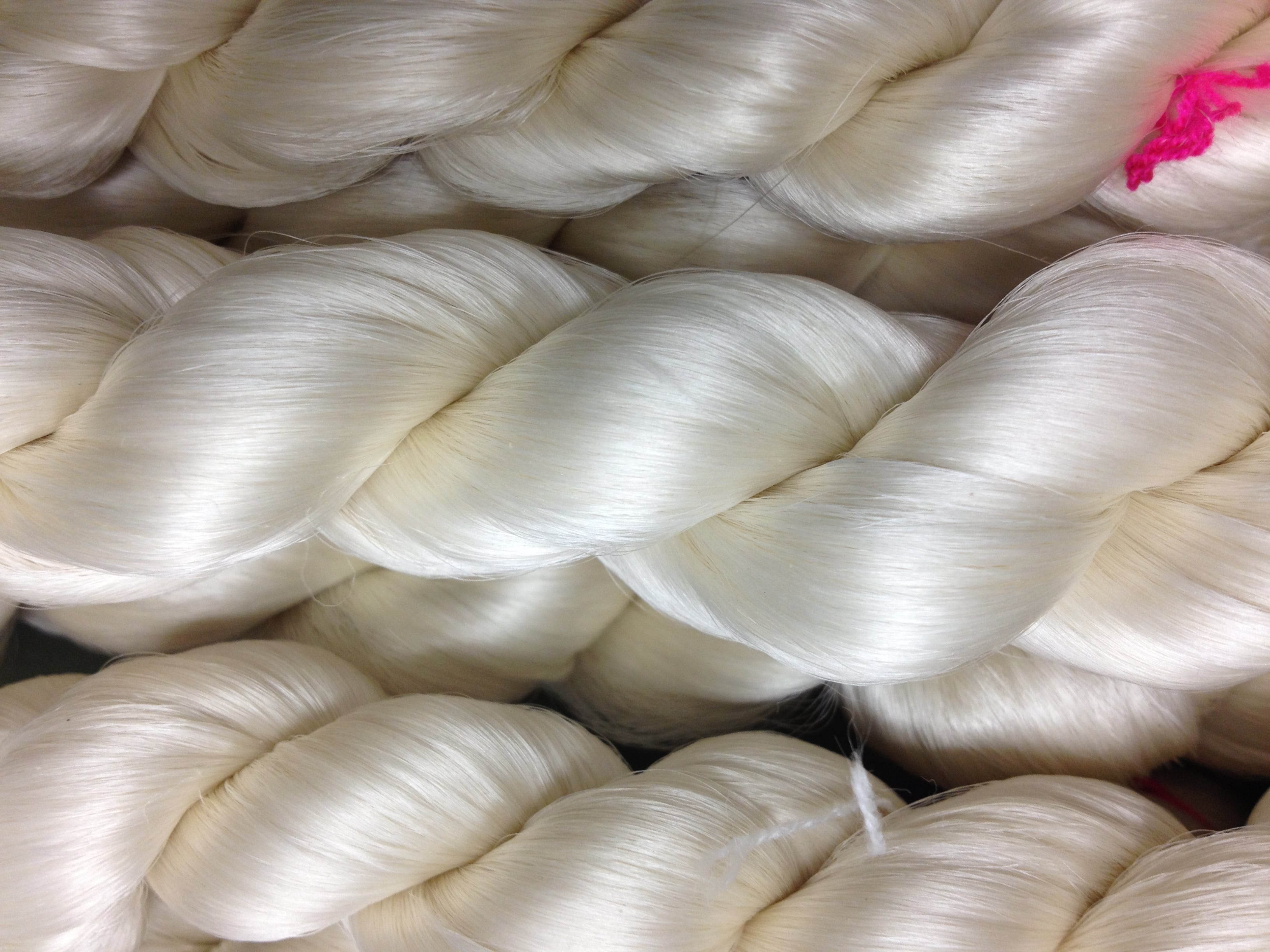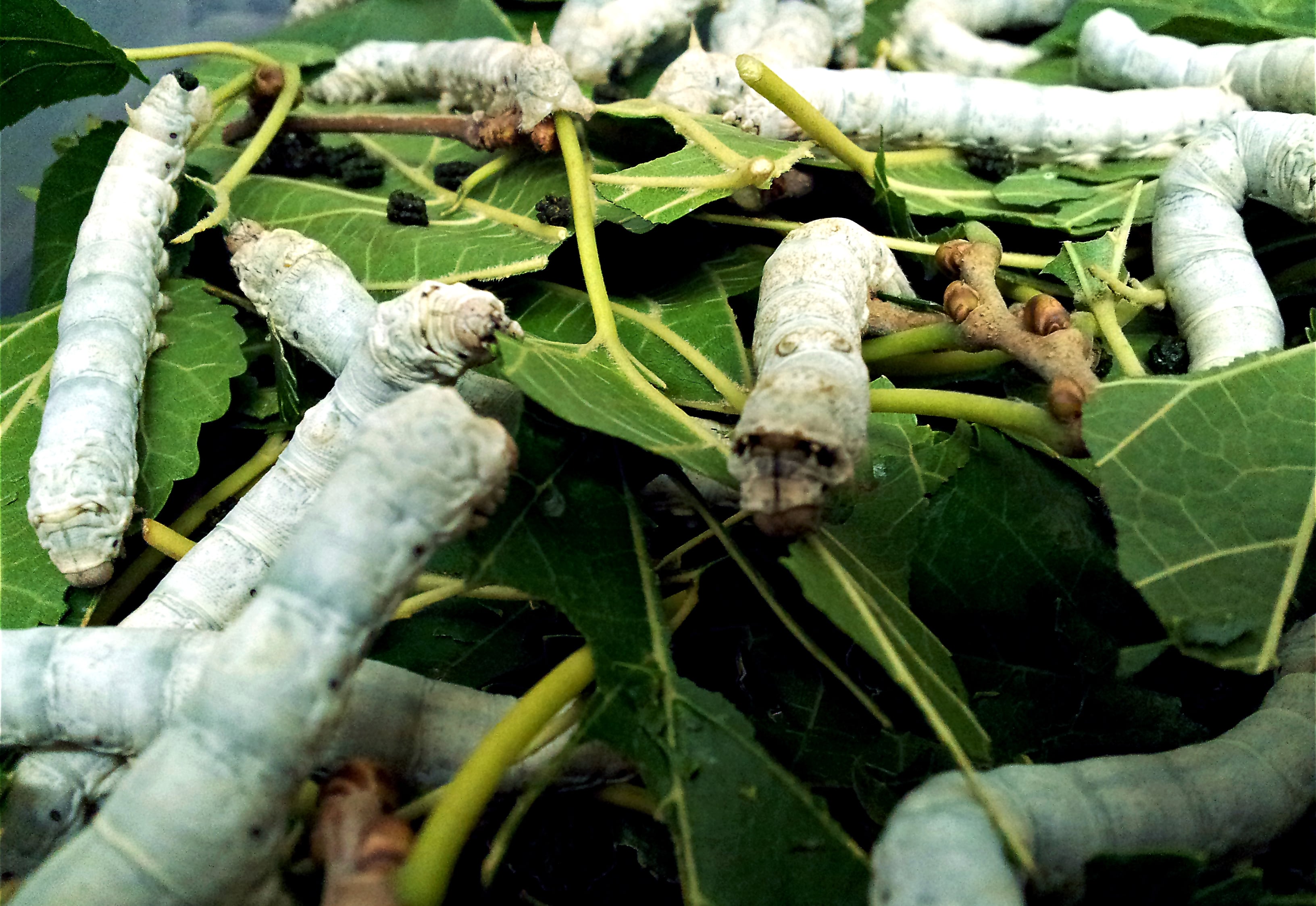This article has been updated to include a statement from the Army. It first published July 16, 2016, at 11:02 a.m.
The Army will research ways to improve and lighten your ballistic protection — with genetically-modified silk worms.
The technology has "upended the industry," said Jon Rice, Kraig's chief operating officer.
"The process is pretty well understood. We've been harvesting silk worms for silk for thousands of years," Rice said. "Dragon Silk scores very highly in tensile strength and elasticity, which makes it one of the toughest fibers known to man, and the ideal material for many applications."
By comparison, he said: "Kevlar is an incredibly strong material with no elasticity. Ours is almost as strong and 10 times more elastic. The question is 'how does that elasticity play into protective gear?'"

Coils of finished silk.
Photo Credit: Kraig Biocraft Laboratories
The fully-funded contract of $99,962 covers delivery of ballistic shoot packs, which are roughly 15-inch squares of material, for lab testing. The materials from the Ann Arbor, Mich.,-based company are due in April of 2017; if the Army is intrigued by the testing it can exercise an option for a $1 million contract to tinker with applications as well as the material itself in order to better fit ballistic needs. Rice said the company was looking forward to showing how strong and versatile its proprietary Dragon Silk is.
Dr. James Zheng, a scientist with the Army's Program Executive Office Soldier, called this a first step to testing the new material. Zheng, chief scientist for project manager Soldier Protection and Individual Equipment, said that while the Army is developing and testing material solutions all the time, "Mother Nature has created and optimized many extraordinary materials."
"The outcome of this project may significantly impact our future research and development efforts for better, lighter and more comfortable protective gears for our Warfighters," Zhang said in an emailed statement. He said the new material could have "an ideal combination of high strength, high toughness, and bio-compatibility that no man-made fibers could reach."
Rice said the material now costs under $300 per kilogram to produce. He said that number could drop further because the production process itself is not much different to produce than regular silk, which costs about $30 to $50. Rice said competitors trying to make protein strands of similar quality face production costs closer to $3,700 per kilogram.

Silkworms feed on mulberry leaves.
Photo Credit: Kraig Biocraft Laboratories
The company has been working on the material for about 10 years, he said, with silk worms producing the first "non-traditional" proteins (silk is made of a natural protein fiber) six years ago. Much had been known about genetically modifying organisms like E.coli, yeast and other materials to produce certain kinds of proteins. Rice said the company had approached a number of investors and academic researchers about the idea of splicing new genetics into silk worms to produce new materials.
"Most laughed; they said it was impossible," said Rice, who hadn't joined the company at the time. But, he added: "We're all doing same thing: using the critter to create the protein."

Genetically modified silk gland under UV light.
Photo Credit: Kraig Biocraft Laboratories
But researchers at Notre Dame had developed a new gene selection technique and were interested. The first year saw hundreds of thousands of attempts at different combinations of modifications, and through trial and error of educated guesses the company worked toward the current recipe. With silkworms genetically wired to produce tougher wire, the production somewhat takes care of itself; the real cost was developing the right mix.
"The fact that we're using the silk worm is why it's so effective," Rice said.




